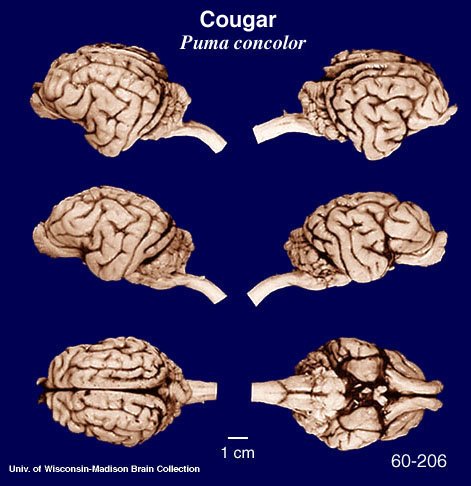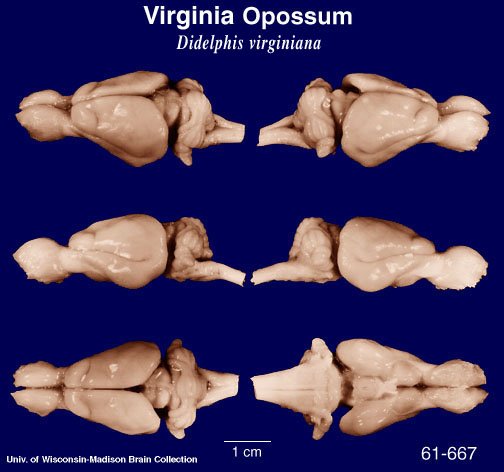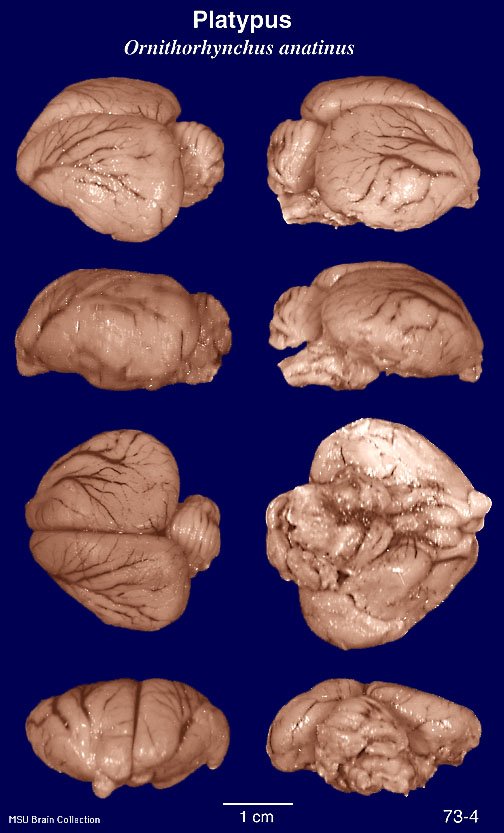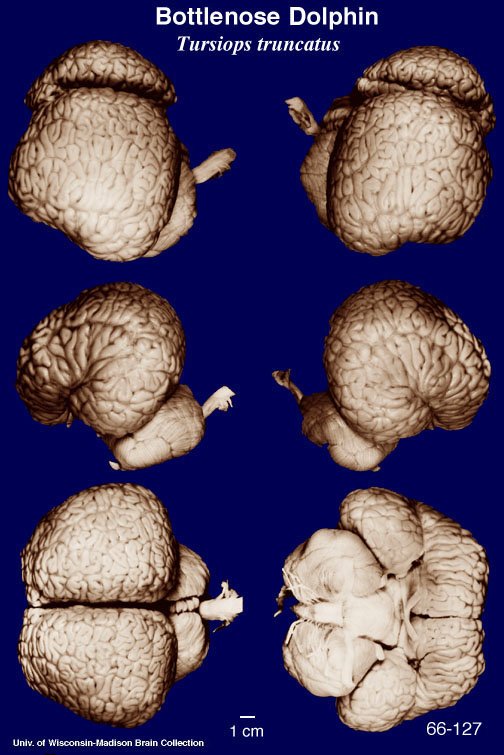Hey guys! Recently I wrote a paper for my science class that I think has some really interesting information I would like to share with you guys. I hope you like it! I'm not going to translate this one into German because it's too long.
To evaluate the theory of descent with modification, I have compiled data from 16 different mammalian species to see if it supports or refutes the theory. I am comparing the taste, smell, touch, sight, hearing, and tool use of each species, as well as determining if any species has a sensory ability that is relatively unique. I am relying on currently available data collected by other scientists, and it is important to emphasize that this data is limited due to the lack of controlled studies that have been conducted in this particular area. I have elected to focus on the sensory capabilities of these species because each sense that mammalian species have is reflected by a part of the brain that receives sensory input from the receptors for that sense, and variation in the sensory capabilities of a species is accompanied by variation in the exact neurological pathways in their brains. I am looking for an explanation for these differences, and the theory of descent with modification is one possible answer that I am examining.
To help demonstrate the data I have gathered in a simple form, here is a basic chart approximating the features of different species on a 1-3 scale to help compare them. For the 5 senses, 1 indicates significantly below average, 2 indicates roughly average, and 3 indicates significantly above average, in relation to other mammals. For the tool usage, 1 indicates we have not seen any demonstration of tool usage at all, 2 indicates we have evidence of a small or medium amount of tool usage, and 3 indicates this species relies heavily on tools for daily survival. Two of the species I compiled data about have a sense that is relatively unique to that species, that they rely on heavily in their daily life.
| Species | Smell | Taste | Touch | Sight | Hearing | Tool Usage | Other |
|---|---|---|---|---|---|---|---|
| African Bush Elephant | 3 | 2 | 2 | 1 | 3 | 2 | N/A |
| American Black Bear | 3 | 2 | 2 | 2 | 2 | 2 | N/A |
| Bottlenose Dolphin | 1 | 1 | 3 | 3 | 3 | 2 | Echolocation |
| Cougar(Puma) | 2 | 2 | 2 | 2 | 2 | 1 | N/A |
| Domestic Cat | 3 | 2 | 2 | 2 | 3 | 2 | N/A |
| Domestic Dog (Beagle) | 3 | 2 | 2 | 2 | 3 | 2 | N/A |
| Domestic Guinea Pig | 2 | 2 | 2 | 1 | 3 | 1 | N/A |
| Fennec Fox | 2 | 2 | 2 | 2 | 2 | 1 | N/A |
| Gorilla | 3 | 3 | 3 | 2 | 3 | 2 | N/A |
| Human | 2 | 3 | 2 | 2 | 2 | 3 | N/A |
| Platypus | 2 | 2 | 2 | 2 | 2 | 2 | Electroreception |
| Polar Bear | 3 | 1 | 2 | 2 | 3 | 2 | N/A |
| Raccoon | 2 | 2 | 2 | 3 | 2 | 2 | N/A |
| Red Fox | 2 | 2 | 2 | 2 | 2 | 2 | N/A |
| White-tailed Deer | 3 | 1 | 1 | 2 | 3 | 1 | N/A |
| Virginia Opossum | 3 | 1 | 2 | 1 | 3 | 1 | N/A |
According to the theory of descent with modification, a species evolves according to its environment, with traits that are important for survival becoming stronger, and traits that are less important remaining roughly the same, becoming weaker, or even disappearing from the species altogether over long periods of time. According to this theory, the strength of a species' senses should correspond to how useful the sense is in that species' environment and lifestyle. Assuming that the theory of descent with modification is true, one would expect mammalian brains to model evidence for it, such as favoring the development of certain senses, or the loss of other senses, based on how much a species is dependent on those senses.
Many of the mammals I have listed here have very strong olfactory abilities, meaning that smell is quite important to their survival. Virginia opossums in particular rely very heavily on their noses for survival, and have extremely poor taste and sight. It is important to note that the olfactory bulb in an opossum's brain is extremely large compared to the size of its brain. Opossums primarily use smell and hearing to navigate their environment, and this causes them to have very little dependence on taste and vision, such as using their sense of smell to differentiate between good and bad food, which is often the purpose that taste serves, except that smell also helps them find their food. The polar bear is another animal that appears to replace the need to taste things with an exceptional sense of smell, and this means that smell is very beneficial and important to most mammalian species. A very interesting exception to this is dolphins, which have no sense of smell or taste at all, which means that they do not often face the problem of distinguishing between foods that are extremely similar.
One pattern to notice is that a majority of the species on this table have a 1 or 2 in the taste column, which implies that taste is not as essential to survival as the other senses I have listed here. I will note that taste is particularly difficult to measure, but the data we do have suggests it is not as strong as other senses in most of the mammals listed here. This indicates that other senses are sufficient to distinguish between edible and not edible for most mammals, an exception being the primates I have listed. The primates I have included here are gorillas and humans, which both have above average taste capabilities, indicating that taste is a sense that that is very important in their daily lives. As an example, the diet of gorillas consists primarily of fruits, and taste is the most useful sense for distinguishing between different fruits. In contradistinction with this, polar bears have extremely limited capabilities of taste, and their diet is primarily seals and arctic foxes, where their entire diet tastes relatively the same.
It is very important to note that all the animals I have listed have average or better hearing, which means that hearing is an extremely important trait for mammals to have, and it is also important to note how versatile this sense can be. African bush elephants are able to hear a much wider range of sounds than most animals, and this allows them to communicate with each other by sound over very long distances. Dolphins also have highly developed hearing, and in contrast to elephants, dolphins use their highly developed hearing to locate fish by means of echolocation. White-tailed deer have a really good sense of hearing, and they use it most of all to avoid predators.
Touch is a very adaptable sense for many of the animals I have listed, for a variety of reasons. Black bears, cougars, and domestic cats have glabrous pads on their paws that are extremely sensitive and can be used to gather various information about their environment. Raccoons have highly evolved hands that they use to manipulate objects and navigate in the dark. Bottlenose dolphins have skin that is extremely sensitive to vibrations and changes in water pressure. The most remarkable sense of touch among the animals I have listed here is definitely the platypus, which can detect electrical signals in the water around it. The touch abilities of the mammals I have chosen are used in very different ways, and all of them are very important and effective.

Vision is an extremely useful ability for animals to navigate their environment in everyday life. Many mammals that are predominantly nocturnal, such as raccoons, have eyes that can adjust to see better than most animals in low light conditions, but unlike many animals that have excellent vision in the dark, raccoons also have good vision during the day. Their pupils can dilate or constrict to adjust to light conditions, which is true of many mammals, but the range of light conditions in which raccoons can see is particularly wide. Elephants have relatively poor eyesight regardless of light conditions, but they rely heavily on their exceptional sense of smell and hearing, giving them little reason to need good eyesight. Virginia opossums are primarily nocturnal mammals, but unlike raccoons, they primarily use an extremely advanced sense of smell to navigate their world, which effectively prevents them from depending on their relatively weak eyesight.
The qualifications for tool use in mammalian species are not well defined, but factors that influence the development of tool use include intelligence, problem-solving ability, physical dexterity, learning ability, and environmental factors. Mammals that are more intelligent and have larger brains are more likely to use tools, as are those that live in environments where food is difficult to find. Humans are almost unique in how much we rely on tools, but there are many species that use tools occasionally or even rely heavily on them. Many animals use tools occasionally, such as platypodes using rocks to aid in hunting, elephants using branches to scratch themselves that they can't reach, or even red foxes building shelters. Opossums are a curious example of a mammalian species in which we have seen no evidence of tool use, even though they score extremely high on intelligence tests and have all the motor skills necessary to grasp things.

In the case of electroreception in the platypus, there is a unique part of the trigeminal sensory nucleus that has developed to receive and process electroreception. Electroreception is a sense that the platypus relies on heavily for hunting in murky water, by generating electric fields and detecting distortions in these fields using electroreceptor organs. Platypus is not the only species to have this capability, but it is very uncommon.

Echolocation is another extremely uncommon sense that has been developed by a handful of species, including dolphins. The part of the brain that receives sound input in dolphin brains has evolved to be very large and complex to distinguish between extremely small differences in sounds, and takes up a large portion of their brain compared to other mammalian species. Dolphins rely heavily on echolocation for hunting, and in comparison to other mammals, they have no important use for a strong sense of smell because they rely heavily on other senses.

Mammalian brain structures support the theory of descent with modification for several reasons. The most significant example of this is the basic structure that is common to almost all mammalian brains, with variations in complexity and detail. The sensory abilities of mammals are very closely tied to their brain structures, and variations in their sensory abilities imply variations in their neurological pathways. All of the data I have examined in this project support the theory of descent with modification.
Congratulations @cassidydawn! You have completed the following achievement on the Hive blockchain And have been rewarded with New badge(s)
Your next target is to reach 60 posts.
You can view your badges on your board and compare yourself to others in the Ranking
If you no longer want to receive notifications, reply to this comment with the word
STOPTo support your work, I also upvoted your post!
Check out our last posts:
Support the HiveBuzz project. Vote for our proposal!
View or trade
BEER.Hey @cassidydawn, here is a little bit of
BEERfrom @pixresteemer for you. Enjoy it!Learn how to earn FREE BEER each day by staking your
BEER.Interesting. It's curious that you systematically say "descent with modification" instead of "evolution".
Yeahhhh they're the same terms, I'm not sure why I didn't just say evolution. Btw I love your profile picture